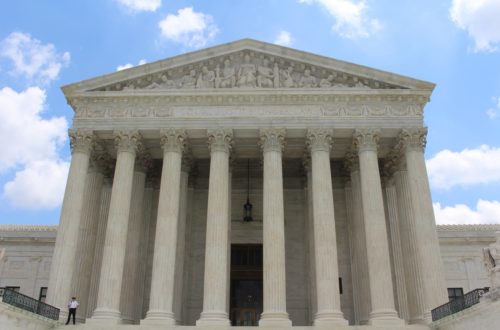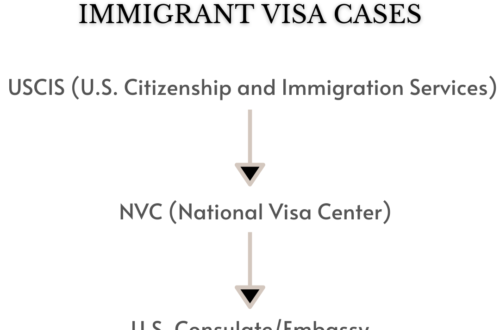
EB-2 Overview and Basics
An EB-2 visa is an employment-based permanent residency visa for employment within the United States. It is the second type of five preference visas where people can gain lawful permanent status (aka green card) based on their jobs or profession. It is an ideal option for those seeking permanent residency in the United States and has advanced degrees and work experience in his or her field of expertise.
To qualify for an EB-2 visa, one must be a member of qualified professions holding an advanced degree or the equivalent. Individuals who have an exceptional ability in science, art, or business that benefits the American economy, cultural or economic interests may also eligible. Generally, applicants must have an approved labor certification form, a job offer, and their employer must file the I-140 Immigrant Petition. If applicants are applying for a National Interest Waiver, there may be an exception to these requirements. There are 40,000 green cards allotted for each year. For FY 2018, 1st Quarter there were 33,230 applications received and 30,472 were approved for employment-based green cards.
Let’s talk about eligibility:
- Advanced Degree: The job you apply for must require an advanced degree (i.e. a U.S. master’s or doctorate or its equivalent), or a person may qualify for this category if he/she has a 4 years U.S. bachelor’s degree, or it’s equivalent, and 5 years of progressive work experience. Further, the degree/experience requirements must be considered industry standard. For example, if the job generally requires at least a bachelor’s and no experience in the industry is required, it would be tough to get through the labor certification process under the EB-2 category. Another important thing to keep in mind is that the degree must be related to the profession the employee is seeking to gain the EB-2 visa for.
- Exceptional Ability: If the applicant has an exceptional ability without an advanced degree, they also may be eligible. Exceptional ability means the applicant has a degree of expertise significantly above the normal experience expected in the science, business, or art fields.
- National Interest Waiver: An individual may qualify to have the Labor Certification waived due to U.S. interest. The waiver is usually for those who have exceptional ability and whose employment would benefit the U.S. One may self-petition without an employer. This is the same as exceptional ability category, but they request the labor certification is waived because it is in the interest of the U.S. These individuals may also self-petition and do not need to have an employer sponsor them. An example is a physician who agrees to work in an area where there is a shortage of healthcare professionals. Other examples include a biomedical engineer who is a leader in his field for research on cardiac arrests that lead to death, or a computer and IT specialist who was sought after due to his Air Force and military experience.
National Interest Waiver
There are not specific rules or professions that are considered a “national interest.” Each case is evaluated on an individual basis. However, there are several factors USCIS uses to determine if admitting an applicant into the U.S. would be in its national interest:
- American Economy– Will the benefit from the applicant’s admission help our economy?
- Healthcare- Will the applicant help improve healthcare?
- Special Request- Has a U.S. government agency specifically requested the applicant be admitted?
- Education-Will the applicant’s admission improve training and educational programs benefiting U.S. under-qualified workers and children?
- Housing- Will the applicant’s admission help create more affordable housing solutions for the poor, elderly, or children?
- Environment- Will the applicant help improve the environment and lead to better use of natural resources?
- Employment- Will the applicant improve the working conditions and wages of U.S. workers?
Some of the criteria to apply for the National Interest Wavier and exceptional ability category include:
- Official academic record
- Letters documenting at least 10 years of experience
- A license to practice the profession or certification
- Salary that demonstrates your ability
- Membership in professional associations
- Recognition for your achievements and significant contributions to your industry, government, professional or business organizations.
There are two professions worth mentioning that actually do not require the employer to go through the labor certification process – nurses and physical therapists. These professions have been determined to be chronically short of workers. This means employers who need foreign workers for these positions can skip the PERM process altogether.
How to Apply
- The employer will have to get a prevailing wage determination and be able to prove that they can pay the required wage.
- The employer has to file for a Permanent Labor Certification with the U.S. Department of Labor using the PERM system. Employers will be required to go through a specific recruiting process to prove that they were not able to find qualified American workers to do the job. It is required the employer proves there are no qualified American workers to do the job. It is a meticulous process and can delay the process time up to a year if deadlines are not followed (see PERM blog post for more detail). If all the requirements are met, the Department of Labor will issue a PERM form. National Interest Waiver Applicants do not have to complete this step because they file for themselves or self-petition.
- Since the EB-2 category is for those in professional occupations, the employer must post the job posting in 3 additional forums during the recruitment period. Again, you can refer to this blog post for those forums.
- After PERM is received, the employer will fill out an I-140 to petition for the employee in the EB-2 category. When the PERM is submitted, USCIS will give the applicant a priority date. The EB-2 priority date is when the applicant will be eligible to proceed to obtain a green card. Depending on how many visa applications are submitted and currently processing, the timing can be substantially delayed because there are only a certain number of green cards available each year for this category. When this happens, it is called priority date retrogression. For example, if there is a current waiting time of 3 months, those who filed six months ago are the only ones eligible to move to the next step. Some countries like India have to wait several years until their priority date is current. It is important to proceed with the application as soon as a visa is available to prevent delays.
- Once allowed to move to the next step, there are two options. The first option is for those who are not currently living in the U.S. The applicant will have to visit the U.S. consulate in their home country and go through an interview. The consular officer will ask questions pertaining to the employer in the U.S. such as job duties and travels to the U.S. If the consular officers clear the applicant, they are authorized to travel to the U.S. and be admitted into the U.S. as a lawful permanent resident.
- The second option, if the applicant is already residing in the U.S. in lawful status, he/she can file for an Adjustment of Status through Form I-485 to get his/her green card. The applicant may also apply for the employment authorization. It used to be the case that the applicants did not have to attend an interview at a local USCIS field office. However, interview appointments are now required for these applicants where the officer will make a final decision on the person’s eligibility.
Family of EB-2
Spouse and unmarried children under 21 can be admitted into the US on E-21(for the spouse) and E-22 (for the children) immigrant status. The spouse is eligible to file for an employment authorization document (EAD) while the process of applying for permanent residency is going on if they are filing for adjustment of status in the U.S.
Timing
The total time varies due to the country of origin, the USCIS service center that processes the petition, and delays. For the I-140 step, a premium processing fee of $1225 can be paid to USCIS, which is a fee that will expedite the case and USCIS will issue a response within 15 days of receiving the file. When it gets to the I-485 stage or applying for the immigrant visa to come here, times can vary based on a lot of different factors, like where the employee is from or which U.S. consulate will be conducting the interview. For example, if the employee is already living in the U.S. and lives in Utah, as of the writing of this post, the Salt Lake City field office gives a processing time range of 10 – 19.5 months for a decision If the person lives in San Francisco and will process through the USCIS office there, the processing time range that is given is 9 to 14 months.
The employment-based immigration procedures and policies are very specific and have strict timelines that must be followed. For this type of process, having an experienced immigration attorney is a no-brainer.




